10 Ways To Get Your Child To Love Vegetables
on Dec 04, 2021, Updated Dec 19, 2021
This post may contain affiliate links. Please read our disclosure policy.
Have a picky eater that doesn’t like to eat their veggies? Feel like your child will eat fruits and other sweets without any issue, but consistently leaves vegetables behind? This is completely normal. Here are 10 tips to help get your child to love vegetables.
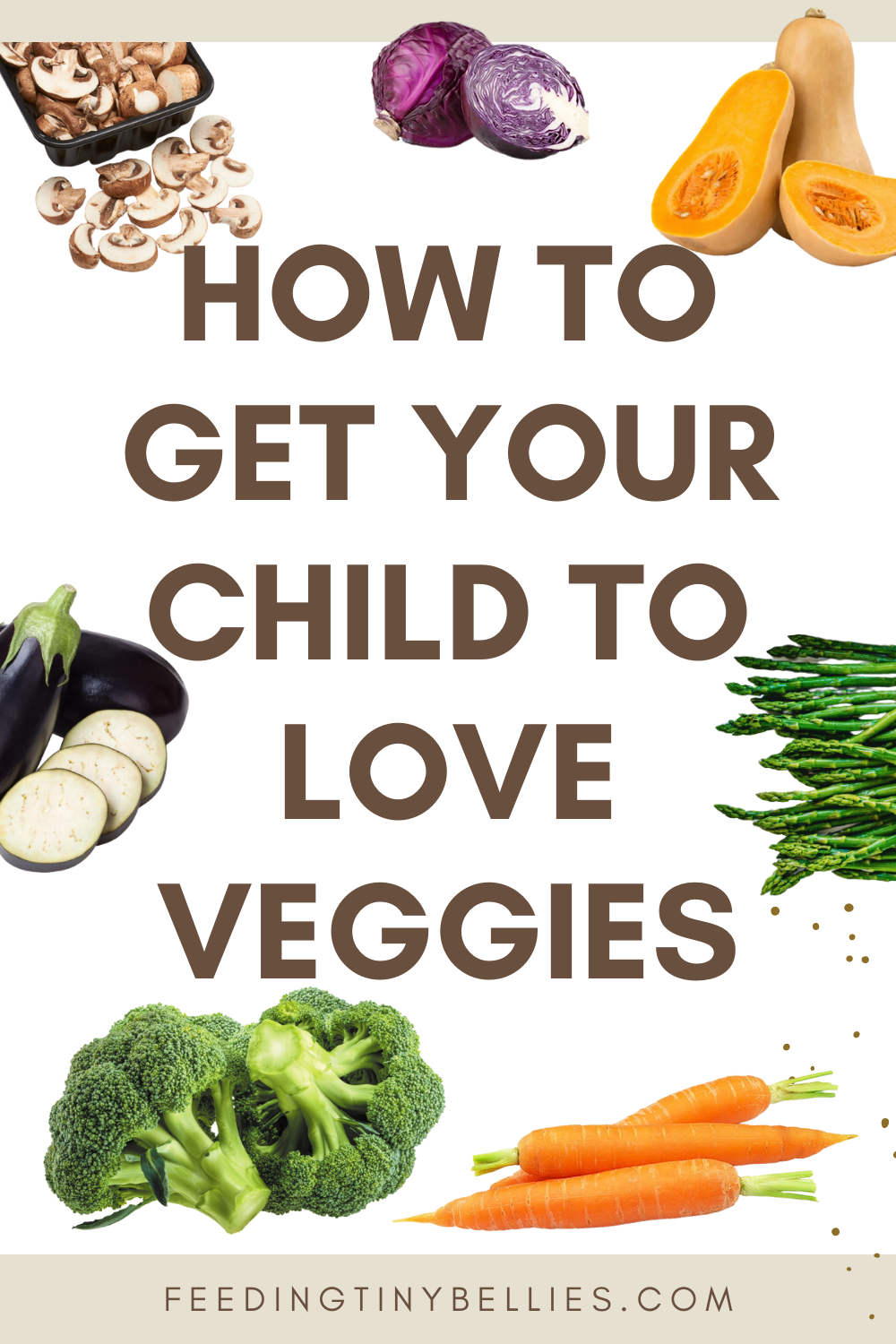
WHY DO BABIES AND TODDLERS PREFER SWEETS?
Before we discuss how to get your child to love vegetables, let’s talk about why they always seem to prefer sweets. The main reason for this is: it’s in our blood! A baby’s first food is milk, which is naturally sweet in taste. Breastmilk and formula are sweet in taste, so babies are used to natural sweet flavors from the start. They are also born with so many taste buds and pick up on bitter flavors easily. Veggies may take more time to get used to since they tend to be more bitter and bland.
So, how exactly can you get your child to love vegetables? Let’s get on to the tips!
1. OFFER THEM OFTEN
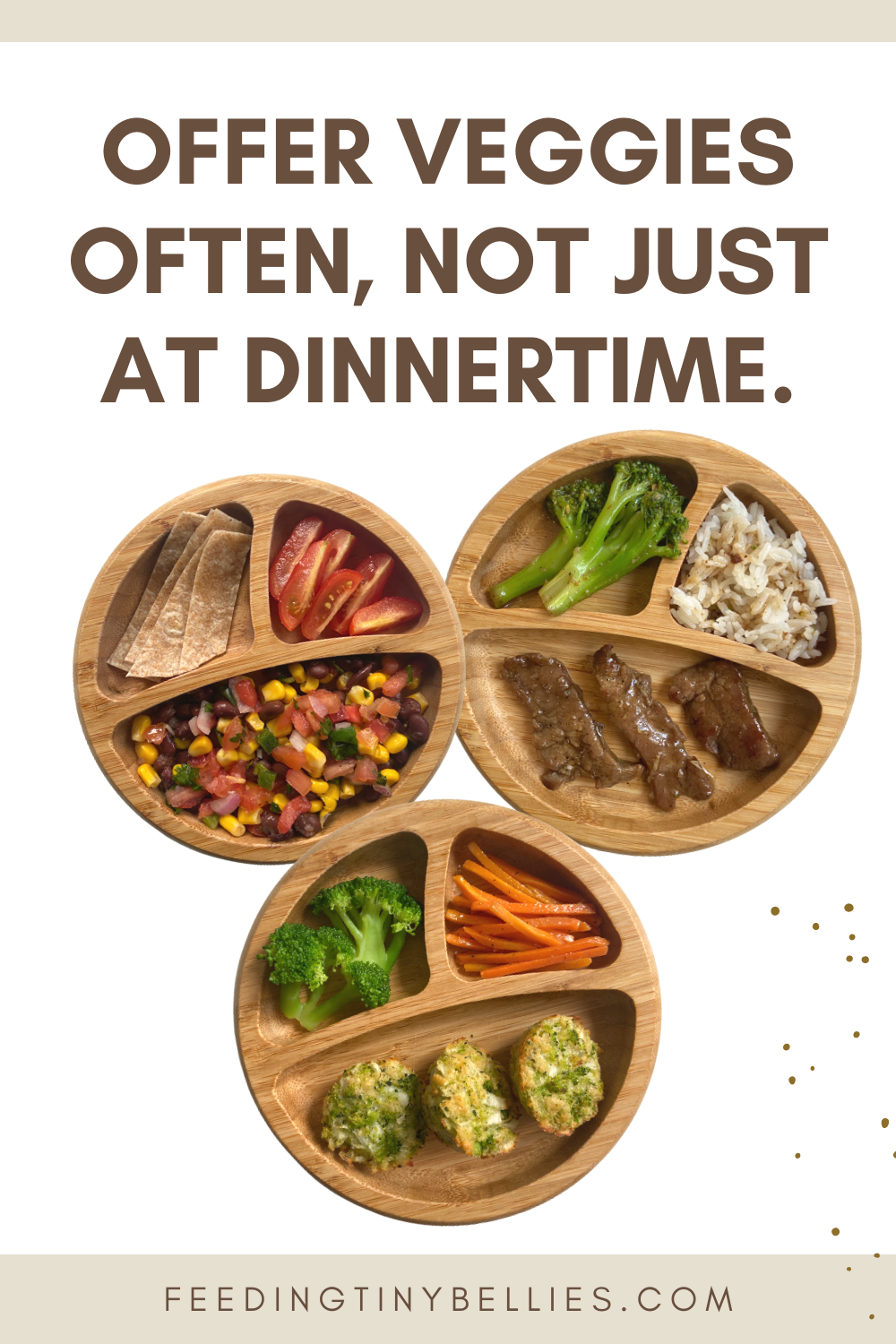
When it comes to offering vegetables, we can’t just offer them at dinner time and expect our little ones to jump on them. If they are only offered veggies once a day, this reduces exposure and decreases the chance of them being willing to try it. Veggies can be offered with lunch, as a snack, and even with breakfast! Be consistent with offering veggies to increase exposure to different vegetables as much as possible.
2. PAIR THEM WITH FAMILIAR FOODS

Offering a plate full of brand new foods can be overwhelming. Think if you were to visit a new restaurant and were served a plate full of several foods that you’ve never seen before. Unless you’re an adventurous eater, you’d probably be a little hesitant to jump right in. When it comes to introducing and serving vegetables, offering a plate of asparagus, squash, and brussel sprouts may be a little intimidating. Try pairing vegetables with familiar foods so that there is at least one comfortable food item on the plate. As your child eats the familiar food item, they may be willing to try the vegetable.
3. LET YOUR CHILD EXPLORE AND HAVE FUN!
When offering your child a new vegetable, give them the liberty to explore it! For example, if you are offering your child beets for the first time, you can try letting them touch them and saying something like, “wow, they made your hands pink! I wonder what they taste like!” Make fun shapes out of different vegetables to make them look exciting! Mealtimes should be a fun experience, so get excited so that your child can pick up on that positive energy!
The other week, I showed my toddler a plate of all different colored veggies as an activity and asked him to identify the name and color of each one. I didn’t tell him that he had to eat anything and approached it as just an activity. He was so excited to get to name them and proud that he knew all of the colors. After a few minutes, he asked me if he could taste one of them and I said “sure!” Exploring them got him interested in the taste, and even though he ate only 2 bites, I counted that as a win!
Encourage your little one to touch, pick up, smell, and even lick the offered vegetables! Exposure is a step in the positive direction, even if they don’t actually eat them.
4. TO HIDE OR NOT TO HIDE THE VEGGIES?
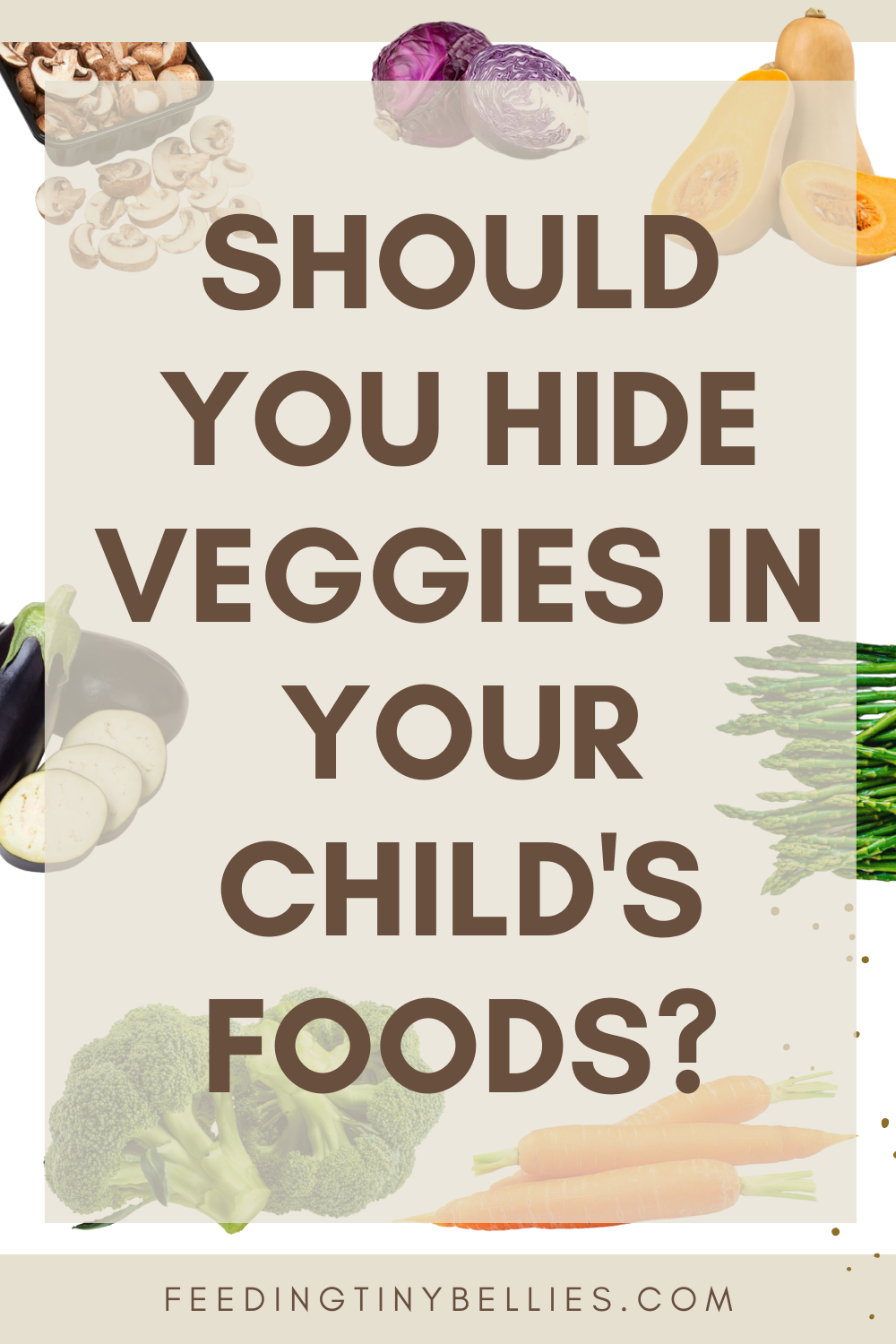
As parents, we’ve all heard the trick of trying to sneak veggies into foods. “They’ll eat it if they don’t know what it is!” Here’s the thing: How can we teach our children to love something when they don’t know what it is? Don’t get me wrong, I definitely incorporate veggies into different foods (and will gladly add spinach to a sweet smoothie for my boys), but I don’t try to hide this from them. In fact, I make it obvious!
I make spinach banana muffins for my toddler Myles all the time and he loves them, but I tell him that there’s spinach in them. Sometimes, I have him make them with me and show him how the spinach turns the batter bright green. He is always so fascinated about this and always excited to eat them! I also have him help me make mini spinach quiche so that he can see spinach being added and how the flavor profile differs from sweet muffins. We talk about the different flavors and even though he is only 3, he is able to understand the differences between savory and sweet tastes. Contrary to hiding them, I make it obvious and find that being transparent with him makes him more willing to try something new.
5. MAKE THEM TASTE GOOD!
This one is a BIG one! Who wants to eat something that doesn’t taste good?! Vegetables are not as easy as fruits when it comes to serving. Most of the time, you can’t just grab a handful of veggies, wash them, and serve them to your little one. Vegetables are generally bland and require a little more work to doctor up. There are so many ways to make veggies taste good! Here are some suggestions:
Season them well! There are so many different types of spices and flavors you can add to vegetables to make them taste good. Check out this post on flavoring foods for babies!
Cook them in different ways. Baked broccoli, roasted broccoli, sauteed broccoli, and air-fried broccoli all have different tastes and flavor profiles. Experiment with different cooking methods to see which flavor your little one seems to like most.
Serve with sides or dips. Serving veggies with a side or dip can help enhance the overall taste. If you offer vegetables with a familiar dip, your child may be more willing to try them out!
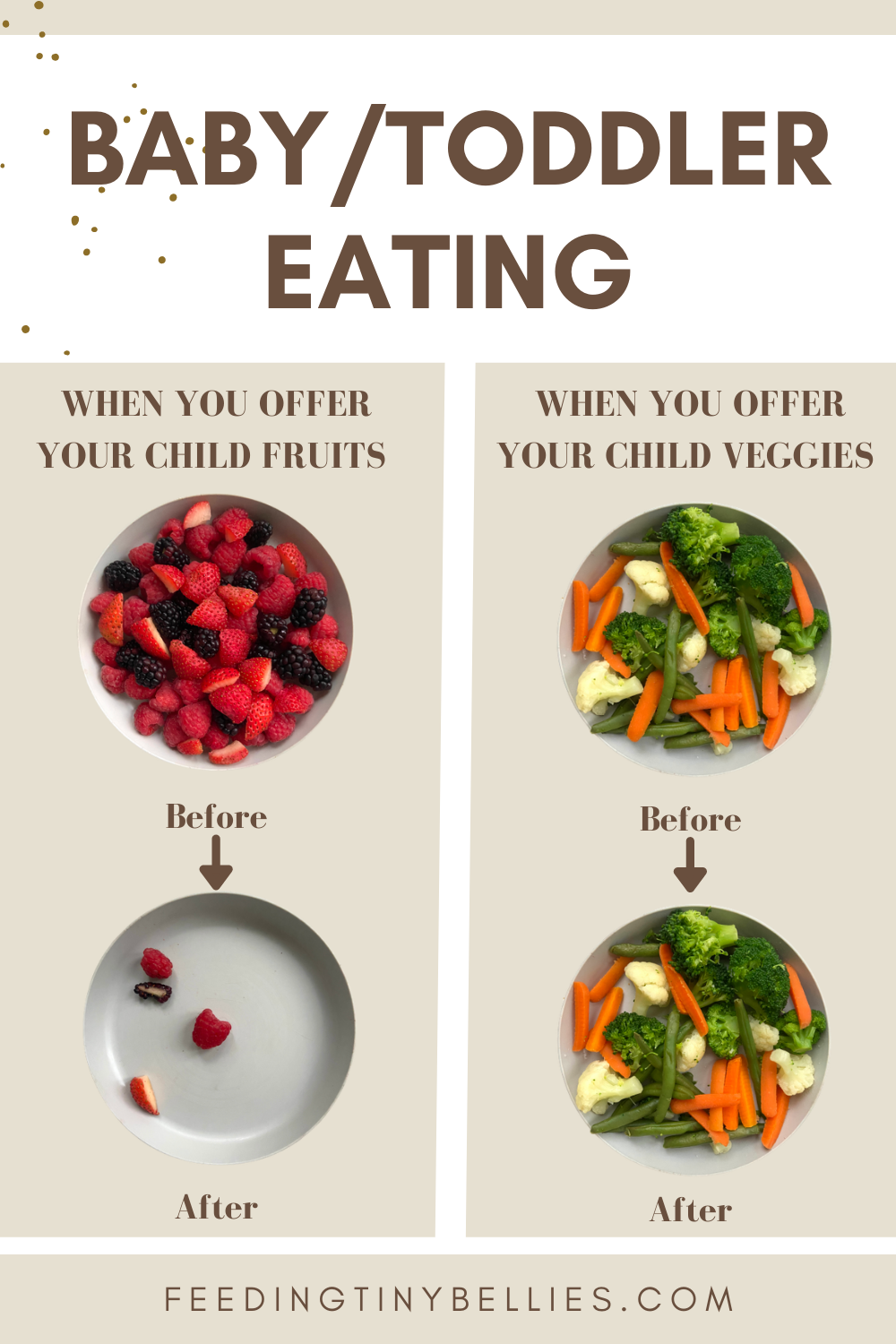
6. GIVE YOUR CHILD CHOICES
Offering choices is a technique I’ve been using with my toddler and it has been working well. When I give my son a choice, it makes him feel like he has some sense of control and independence and he is more willing to try different things. For example, prior to making dinner, you can ask your child things like, “would you like to have broccoli tonight or cabbage?” “Would you like me to air-fry your brussel sprouts or cook them in the oven?” “Would you like your carrots steamed or with a dip?” Offer them choices without pressuring them to eat. Which leads to our next point…
7. DON’T FORCE THEM TO EAT!
Don’t force them to eat! I repeat, DON’T force them to eat! I know it’s hard not to do so at times, but it never helps! The more you push a child to do something, the less likely they will want to do it. It’s just in our nature. Forcing them to eat vegetables doesn’t help and makes veggies seem like a necessary evil. If your child doesn’t want to eat a veggie at a particular time, just let them be.
This is definitely easier said than done, but forcing them to eat does nothing but create power struggles and causes our little ones to develop a negative relationship with that food. If they constantly hear “eat your broccoli or you can’t play,” what message are we sending about broccoli? Just try reoffering it at another time, in different ways and with different flavors. Mealtimes should be enjoyable and once you enter the battle of forcing foods, it becomes tense and frustrating on both ends.
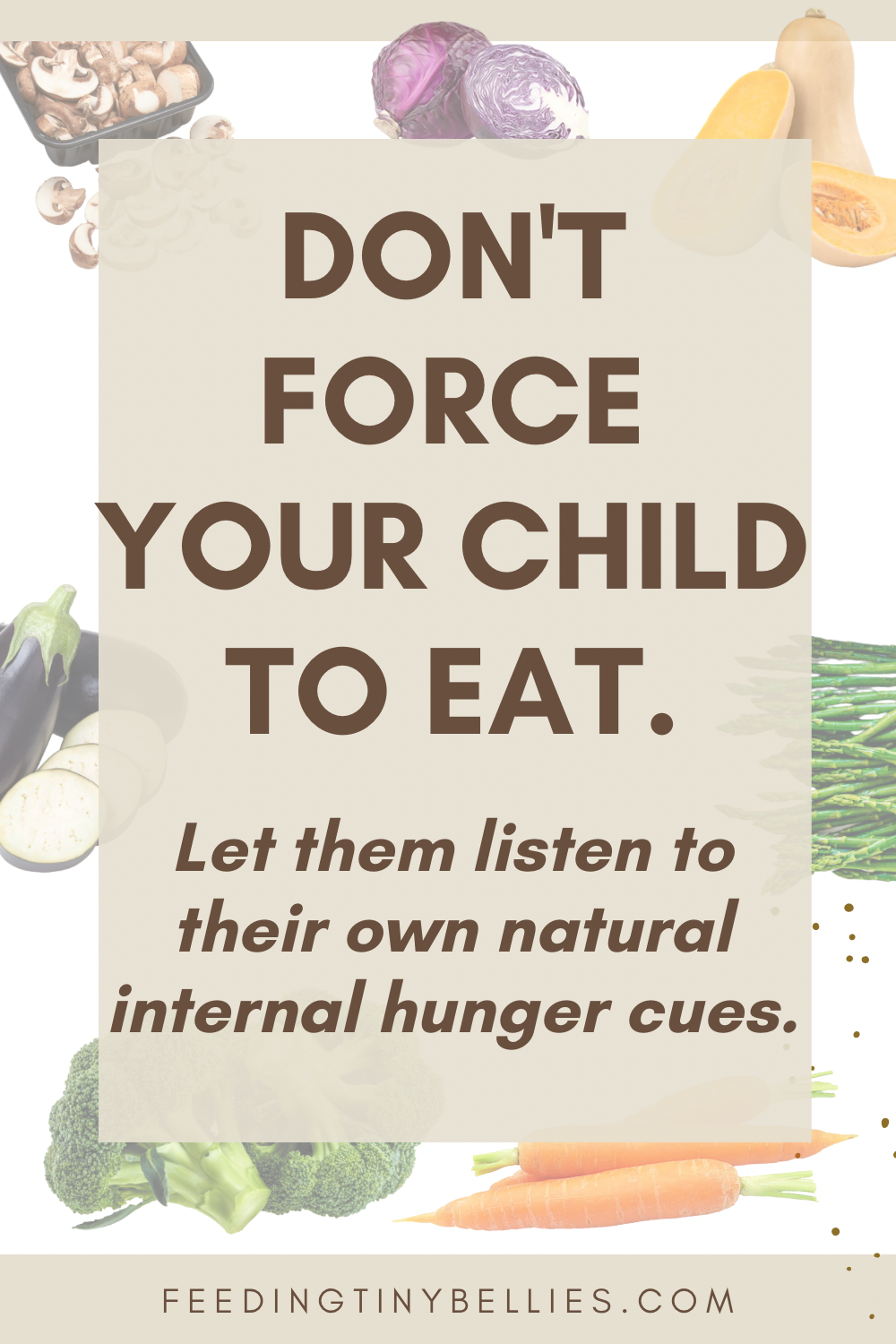
Now, I’m definitely guilty of everything I said above. I used to try to make Myles eat certain veggies and try to bribe him with different things, but it never worked. If anything I was able to maybe get him to eat 2 extra pieces of something, but it usually left us both feeling frustrated and annoyed. Once I stopped doing this and started implementing some of the other strategies, mealtimes felt less tense and more relaxing for everyone.
8. WHEN THEY DO EAT, DON’T MAKE A BIG DEAL
On the other hand, don’t make a big deal when they do eat their veggies. When we make a big deal about certain foods, it places those foods above others. “Eat your veggies and you’ll get a cookie!” To our child, that statement translates to “do this horrible thing and you’ll be rewarded with this great thing!” We set our kids up by doing this, so try not to praise them for tasting certain foods.
9. LET THEM HELP PREPAPRE THEM
I mentioned before that I love to have Myles help me in the kitchen. Even though it takes double the amount of time to make something when he’s “helping” me, it is so worth the time that we get to spend together and the huge smile on his face when he gets to take part. I got him this adorable little toddler apron and mini chef hat and he loves getting the chance to wear it and help out. When we involve our little ones in the process of making something, they are more willing to try it since they know exactly what went into the process of creating it!
10. MODEL FOR THEM!

Children love to watch and imitate behaviors from people around them. The expression “children are like sponges” is so true, they definitely soak up what they see. Another way that we can teach our children to love vegetables is to model for them eating those same foods! Can we expect our children to try the green beans on their plate with chicken if our plates only have the chicken? Model eating and loving vegetables and hopefully your little one will pick up on that behavior too!
I should also mention that these are not next-day fixes. It takes time to implement these strategies, so be patient. I am still working through these techniques with Myles. We’ve come a long way from his dislike for veggies, and I’m happy with the progress we have been making, but it definitely was a journey.
At the end of the day, if your child really isn’t eating vegetables, keep in mind that fruits and veggies have similar nutritional profiles. They can get their nutrients from different types of foods, so don’t stress! Just try to keep offering and see where things go!











Love these toss and tricks gonna try them to see if I can get my toddler to eat more veggies!